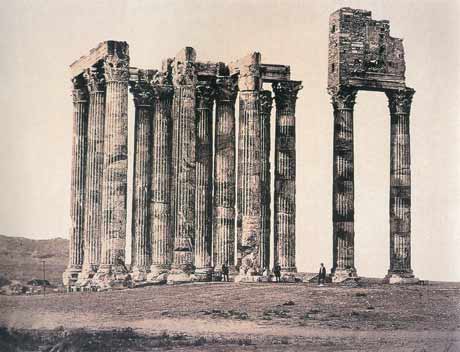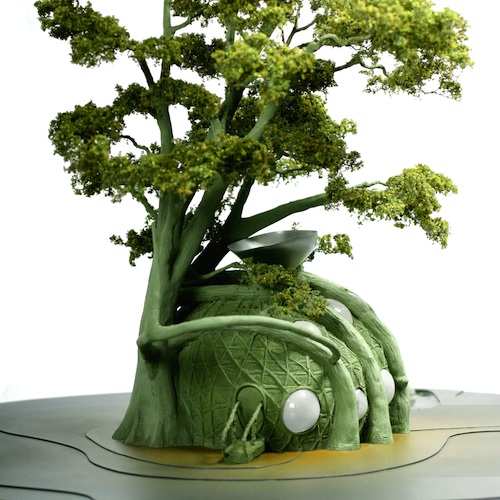We have Never Participated
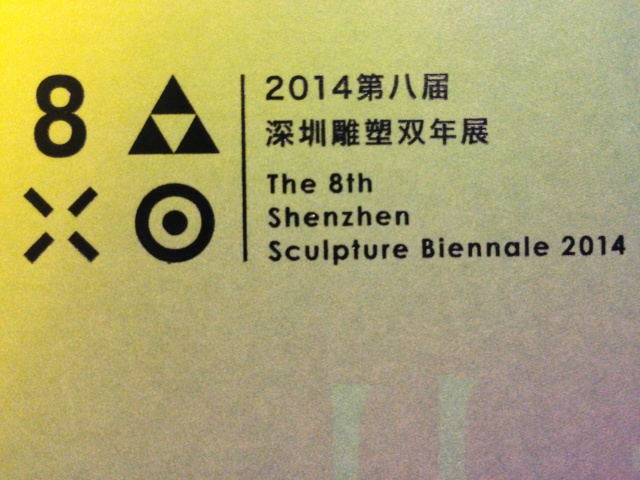
On the occasion of being in the 8th annual Shenzhen Biennale and presenting the work‘Art as Instructions: Public Relations’ I was to have a public conversation about the work with another artist. In preparation I asked the director Marko Daniel what it was he wanted me to share with the audience. Over email he sent me a few questions which prompted to more consciously think through this work which I had presented variations of the Shanghai Gallery of Art, The Minsheng Museum of Art and the Shanghai World Financial Center. I wrote my answers to his questions in a series of line by line thoughts and as such I have left them that way in what follows.
To give some context here is the statement from the show (forthcoming).
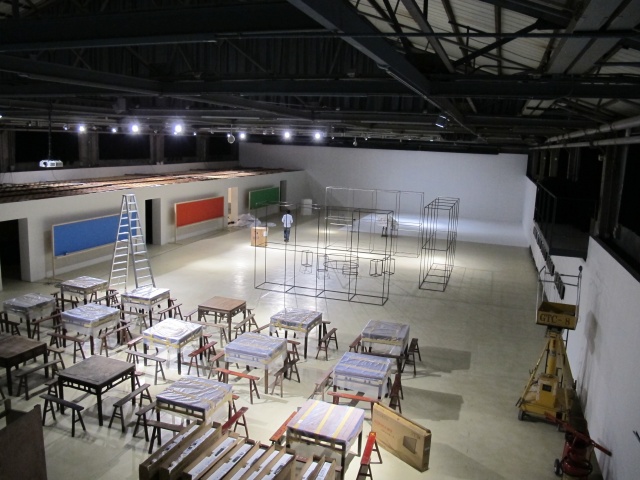
Marko Daniel
Think about your role as an artist in collaborative projects and about the relationship between artist, audience and artwork.
Marc Lafia
-There are multiple things going on at the same time.
-All originating from instructions and then more instructions (do it).
-And even more so collaboration with everyone that gets the work made and installed and cared for.
-In this larger sense it is at the outset a work made by a community (art professionals) for a community (audience/participants/active spectators) and this dialog, event, this act of making creates a community (a kind of social sculpture).
-But rather than a community, here, the artwork (that mediating 3rd terms) creates a communion.
-This communion is very fleeting, but fleeting does not mean something has not happened.
-It means something very personal and at the same social with degrees of intensities, resistances, indifferences and pleasures.
-So the relationship is between artists, another individual (who collectively we call audience) and art work (which is a filed of action or operation or instruction that individuals come to engage and know as ‘open’ or ‘closed’, that is in which way to stand towards this or that work of art).
-It this case the work announces itself as ‘open’.
-This ‘openness’ this variability is inherent to the piece from its very inception.
-Instructions to fabricate at a certain size with certain colors or another size and other colors.
-More than a few times the fabrication is made at a remote place (remote to me).
-What is it to those that make it? To make this object.
-Is it a ‘blackboard’, a ‘color field painting’, a color field panting sculpture with chalk on a ledge, a kind of minimalism, a void.
-Not to be touched, never to be written on, we could ‘close’ the work here at its construction and it would be ‘done’ finished.
-Once language is written, the words, Reality, Utopia, Pleasure, this abstraction of color is given over to a utility (imagine writing on an Ellsworth Kelly) or on Klein blue (we used blue for the eternal sunshine show at the Minsheng).
-All this happens with out me (except for the show at the Minsheng, where I was there for the entire install).
-Though not there I think about it. I imagine it. It’s kind of like a Yoko Ono piece, where she asks you to imagine a painting or action. (A certain amount of contemporary art is like that, you send out the file with instructions and the piece comes back, this of course was not the way Yoko was thinking about it…)
-From these first written words, which could be enough to open and invite individuals to engage with the piece, more direct questions are written out.
-Such directed questions instruct invite the viewer, the observer to participate, that is, to step forward, to come to the board and write something, not necessarily to answer the questions.
-At this invitation anything can happen, can be written.
-But what will happen, who knows.
-It is an invitation to come to the object, which is no longer over there, behind the guard; here you draw the moustache on the Mona Lisa (aren’t all works of art Mona Lisa’s).
-The audience of individuals participate, commune with the work, produce a kind of small event, an individualized event.
-At some preview it becomes a collaboration, though I am not sure that is right, this word collaboration.
-Collaborate would suggest teaming up, joining forces, banding together, having a shared sense of trajectory.
-But participating, their participation, what’s that to me.
-Maybe that’s the event of art.
-The event of perception getting out of the ordinary ways of sensory experience, the framing of the sensory world itself.
-The event of moving into a different world and here that world keeps moving.
-Is this ‘different’ the privileged detourment of everyday alienation.
-Maybe we can’t resist answering questions or speaking up, speaking out, expressing ourselves.
-Its just so matter of fact.
-Maybe it’s a momentary pleasure, it’s pleasuring ourselves ‘we can’t resist’.
-To make public to our friends what we like.
-Maybe it’s a chance to say something, to be ‘artistic’.
-Maybe it’s a chance to respond to something in several languages.
-Maybe its just scrawls in time.
-An algorithm of chance.
-A choreography of swirls of colors and alphabets and signs.
-The world and its vast circuits, built up by a small repetitive and iterative loop.
-As abstract machine of affect and chance, gesture upon gesture, call and response
-But not me building up the gestures as in my paintings.
-Maybe it’s the artwork as work, ‘work’ as in labor now done by others.
-The work of art as social media.
-Recording producing social relations.
-An archive that gives record to a collection of individuals, a kind of monument.
-Of all kinds of affect, often at the same time, cancelling cascading overlaying each other.
-A work where the ‘viewer’ has entered into the process which itself exists ‘permanently’ in the artwork.
-In an ephemeral artwork.
-A manipulation/ coercion (peer pressure perhaps) or the authority of questions that demand to be answered.
-One person writes the name of their favorite Japanese sex star and another writes hers and a book they love and someone walks by with a wry smile.
-And this conversation goes twittering on
-Some one erases, writes over, draws over, a machine has been set up that propels itself connecting vast virtualities.
-An object hood performative of the constant flows of the networks we live in (a land work, a jetty of ebbs and flows, lines of force).
-This moment over written by the next and the next and the next.
-Its structure and play.
-Format and utterance.
-Hardware and software.
-Its authority and the possibility for subversion.
-It’s ‘free speech’.
-It both gives and invites order and anarchy.
-My role is to make the object the event, to fold the event of its making into the object, and the object open to become another object / an object event.
-The billboard, the blackboard, the canvas, the field painting is the hardware, the screen and the questions the software. (Metaphors)
-The questions could be statements, but a statement does not invite like a question.
-Question could be a maxim or proverb (I wrote many).
-Black blue green orange yellow red on a flat surface.
-It’s the chalk, isn’t it?
-For now the questions are ‘simple’ ‘open’ and ‘broad” they point to the interest of the viewer/participant.
-What is matter of fact, for them?
-How they construct themselves in the everyday, what they eat, read, where they go, what they dream of, where they’ve been.
-It suggest openness, but is it really, that depends on the reader, the participant, how they read the questions.
-Open within an envelope of possibility.
-Often people draw on the boards, or write what they want.
-Directed questions rather than ‘open’ ones like, ‘say something, write something’.
-Maybe reality, utopia, pleasure, art, would be in themselves be questions enough.
-There is always an accretion of writing, so often things written disappear.
-But the blackboard goes on even when the questions disappear; the blackboard itself has a universal authority.
-Used for writing with chalk.
-Especially by teachers in school.
-Write/read/erase (when do we erase art?).
-Cut copy paste (we do that with art all the time).
-Surveys, questionnaires, what one likes, does not like, this too is part of a global discourse, format, (consumer feedback).
-The everydayness of this work suspends the work of art, erases what we think of as an authored work, a kind of readily being made.
-But then again maybe it’s a new way to make art more efficiently, to streamline production.
-To get out of the way, to erase the signature of the artist.
-A simulacrum both mimicking and co-opting the model of social networks.
-A simulacrum of the creation of individually signature artworks made by teams by instructions.
-An expose of a contemporary way to produce wealth and value, to be complicit with privatized individualism and establish a market value — let others make the work for you.
-Distributed authorship is not to be conflated with distributed ownership and this artwork is the sovereign domain established by this artist.
-How to make others make you ‘rich and famous’ or how to make the participant famous and the artist rich.
-Or is all about laboring for the biennale.
-Who’s getting rich?
-Why does Shenzhen want a biennale?
-Who’s asking the question?
-We don’t want to participate.
-An engagement to what end, answers to questions to create a kind of action painting, to create something ‘shared’ that is observational, collective and why.
-Utopia, Reality, Pleasure.
-Maybe it’s about this alienating effect in the Brechtian sense of making people aware of the data they are continually generating constantly on social networks (this being sold to a backend auction).
-The play or free labor on social networks.
-The ‘free’ ‘labor’ of ‘artists’.
-And so the artist ‘imagines’ that ‘someone’ (his dealer, collectors, the museum, a kunsthaller) at the end of yet another prestigious biennale will acquire or put up for sale for auction ‘the work” ‘Art as Invention 4, Public Relations’ he and his participants (his ‘performance art’ studio-fair-going helpers, enablers, free laborers), his collaborators and he produced — this rare and singular commodity, this most contemporary of contemporary art works.
-The monies from the sale of the work go to the participants, this would be a politics, that becomes an ethical positioning and an art that becomes emancipatory.
-This would be good business. . ‘Making money is art and working is art and good business is the best art.” Andy Warhol
-No, not just a critique of neoliberals, social networks and art biennales that have learned to socially manage the public who have been depoliticized by entertaining themselves.
-This would be the artist and the world coming alive together (becoming).
-This is the work of art.
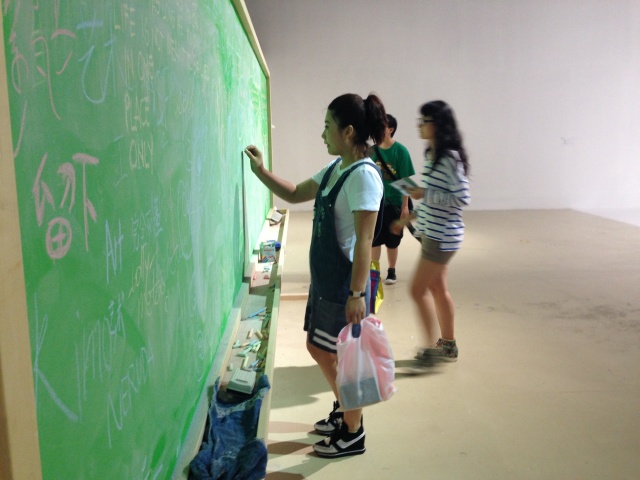
Marko Daniel
What are the possible invitations to participate, to collaborate (on research, realization, performance)?
Marc Lafia
– The first thing to consider are the very terms participation or collaboration, are they in some sense, privileged or if like affirmed.
-Why is that? Let’s for a moment set up the binary participation/spectatorship (though the binary may be very slippery) ‘Being a spectator means looking at a spectacle. And looking is a bad thing, for two reasons. Firstly looking is put as the opposite of knowing. It means being in front of an appearance without knowing the conditions of production of that appearance or the reality, which is behind it.
-Secondly, looking is put as the opposite of acting. He or she who looks at the spectacle remains motionless on his or her seat, without any power of intervention.
-To correct this we need we want pursue art without spectators.
-Spectators will no longer be spectators; they will learn things instead of being captured by images.
-’It was the leftist movement of ’68; it became obvious that something was wrong with the idea that people were exploited and dominated because they didn’t know the law of exploitation and domination; so the sciences were there to bring them the knowledge of what they wished to know. There was a sort of vicious circle: the people cannot understand the place where they are in the system because it is precisely a law of the system that it conceals itself.’
-The spectator has to leave the status of a mere observer who remains still and untouched in front of a distant spectacle.
-What kind of world is given to you, and how do you make sense of that given sensory world?
-Participation, and there are many forms and levels of intensity, is an invitation to socially find and explore the sensible.
-In terms of the theatre, ‘On the one hand, the spectator has to become more distant (Brecht); on the other hand (Artaud) he has to loose any distance.
-For a moment imagine this sensible as a utopian dimension.
-The living body of a community enacting its own principle.
– The community as self-presence opposed to the distance of representation.
-The community as a way of occupying time and space, as a set of living gestures and attitudes which stands before any kind of political form and institution: community as a performing body instead of an apparatus of forms and rules.
-In that way theatre was associated with the romantic idea of the aesthetic revolution: the idea of a revolution, which would not only change laws and institutions but also transform the sensory forms of human experience.
-The reform of theatre thus meant the restoration of its authenticity as an assembly or a ceremony of the community. Theatre is an assembly where the people become aware of their situation and discuss their own interests.
-Art is the ceremony where the community is given the possession of its own energies,
-Participatory art then asks of art to bring to the community its self possession (setting up this guilt and desired redemption).
-It sets its task as giving back to the spectators their self-consciousness or self-activity, spectators become performers of a collective activity.
-Either, according to the Brechtian paradigm, the theatrical mediation makes them aware of the social situation on which it rests itself and prompts them to act in consequence. Or, according to the Artaudian scheme it makes them leave the position of spectators: instead of being in front of a spectacle, they are surrounded by the performance, dragged into the circle of the action which gives them back their collective energy. In both cases the theatre is a self-suppressing mediation.
-The reformers of the theatre share with the stultifying pedagogues: the idea of the gap between two positions. Even when the dramaturge or the performer does not know what he wants the spectator to do, he knows at least that he has to do something: switching from passivity to activity. But why not turn things around? Why not think, in this case too, that it is precisely the attempt at suppressing the distance, which constitutes the distance itself?
-It is easy to turn matters around by stating that they who act, they who work with their body are obviously inferior to those who are able to look: those who can contemplate ideas, foresee the future or take a global view of our world.
-Emancipation starts from the opposite principle, the principle of equality. It begins when we dismiss the opposition between looking and acting and understand that the distribution of the visible itself is part of the configuration of domination and subjection. It starts when we realize that looking also is an action which confirms or modifies that distribution, and that “interpreting the world” is already a means of transforming it, of reconfiguring it. The spectator is active, as the student or the scientist: he observes, he selects, compares, interprets.
-I will stop here my close reading, quoting Ranciere on spectatorship (I am sure you know it)
-Let’s leave it to day “the traditional assumption that artistic practices supposedly generate a critical if not a utopian dimension of experience has withered away.” Instead, “We were left with a sense of the primacy of institutional and economic interests…”
-The judgment of the critic,” Buchloh continues, “is voided by the curator’s organizational access to the apparatus of the culture industry (e.g., international biennials and group shows) or by the collector’s immediate access to the object in the market or at auction.”
-Nobody really wants to know and nobody has to know any longer what the context, the history, the intentions, and the desires of artistic practice might have been or are.
-If we imagine then, again, the use of art as an instrument of enjoyment, of self-interest, and a sign of philistinism, what are we doing?
-Reality utopia pleasure.
-What are we seeking out?
-Perhaps the losing of ourselves, exhilaration, the ecstatic loss of oneself.
-This is to ask not what the possible invitations to participate, to collaborate (on research, realization, performance) are but to what end, as there any number of possible invitations to be initiated.
*
-An idea of the theatre predicated on that idea of the spectacle conceives the externality of the stage as a kind of transitory state, which has to be superseded. The suppression of that exteriority thus becomes the telos of the performance. That program demands that the spectators be on the stage and the performers in the auditorium. It demands that the very difference between the two spaces be abolished, that the performance take place anywhere else than in a theatre.
-But the “redistribution” of the places is one thing, the demand that the theatre achieve, as its essence, the gathering of an unseparate community, is another thing. The first one means the invention of new forms of intellectual adventure, the second means a new form of Platonic assignment of the bodies to their good place, their “communal” place.
This presupposition against mediation is connected with a third one: the presupposition that the essence of the theatre is the essence of the community. The spectator is supposed to be redeemed when he is no more an individual, when he is restored to the status of a member of a community, when he is carried in the flood of the collective energy or led to the position of the citizen who acts as a member of the collective.
-There are everywhere starting points and knot points from which we learn something new, if we dismiss firstly the presupposition of the distance, secondly the distribution of the roles, thirdly the borders between the territories. We have not to turn spectators into actors. We have to acknowledge that any spectator already is an actor of his own story and that the actor also is the spectator of the same kind of story.
-The crossing of the borders and the confusion of the roles should not lead to some sort of “hypertheatre” turning spectatorship into activity by turning representation to presence. On the contrary, it should question the theatrical privilege of living presence and bring the stage back to a level of equality with the telling of a story or the writing and the reading of a book. It should be the institution of a new stage of equality, where the different kinds of performances would be translated into one another.
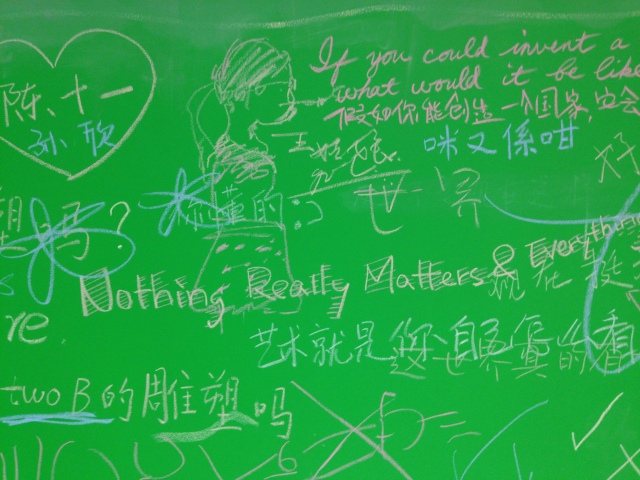
Marko Daniel
What are your strategies of participation or non-participation?
Marc Lafia
-To put things into play.
-Let’s start with these three quotes again from Ranciere.
-‘There was no gap to bridge between intellectuals and workers, actors and spectators , no gap between two populations, two situations or two ages. On the contrary, there was a likeness that had to be acknowledged and put at play in the very production of knowledge.
-In all those performances in fact, it is a matter of linking what one knows with what one does not know, of being at the same time performers who display their competences and visitors or spectators who are looking for what those competences may produce in a new context, among unknown people.
-Artists, just as researchers, build the stage where the manifestation and the effect of their competences become dubious as they frame the story of a new adventure in a new idiom. The effect of the idiom cannot be anticipated. It calls for spectators who are active as interpreters, who try to invent their own translation in order to, appropriate the story for themselves and make their own story out of it. An emancipated community is in fact a community of storytellers and translators.
-It depends; on a film it’s to find something that interest that others and me have a stake in.
-I am not sure if you mean this specifically, or theoretically.
-I just made a film called 27 with 10 people who through much invention and discussion made up much of the script, but not really.
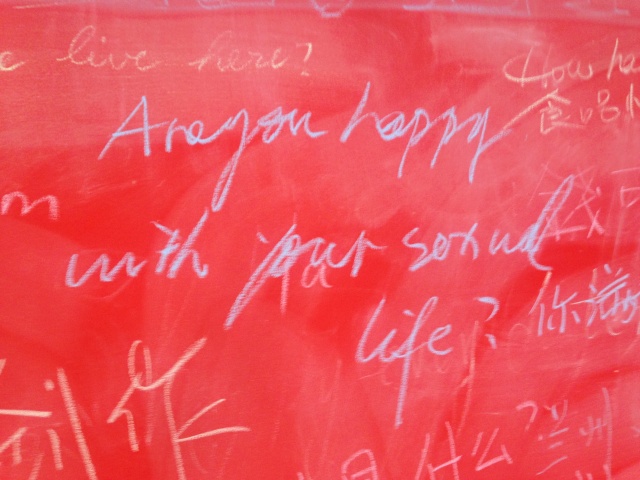
Marko Daniel
It’s worth bearing in mind that the audience will be quite mixed, with different degrees of familiarity with contemporary art practice in general so a little background to your practice would go a long way.
Marc Lafia
-It all started with art as invention.
-And that started with, art as an event of perception getting out of the ordinary ways of sensory experience, the framing of the sensory world itself.
-So me running under a balloon.
-Imaginary igloo.
-Or in art+culture the chance encounter between different practices of knowledge coming together at odd and interesting angles, if you like participating with, in and between each other.
-Where is the event of art and how does it form the persons and society that we have. Tied to this idea of Ranciere. ‘This thought has been important for my idea of politics, not being about the relations of power but being about the framing of the sensory world itself.’
-Framing the sensible.
-Making systems of the sensible or seeing the formation of the sensible in different media, this has always interested me, so in art, cinema, photography, computation, how are things given a rhythm, given a form.
-This new framing is software and network culture, forms, formats, instructions and feedback, call and response.
-I did an art camp for 30 days, each day looking at art forms, sculpture, performance, mark making, painting, language and the work from here went to a show at the Shanghai and in that show was a blackboard.
-From that show I had an invitation from the Minsheng museum of art.
-In the main room we built this big sculptural swimming pool with a karaoke bar, reading area, ping pong table and it also had a big blackboard painted in blue.
-This was thought of as programmable space with in the confines of software.
_It was called Eternal Sunshine, with the idea of utopia as a techno-social system, and the installation a look at this utopia.
-In three other rooms were film stills, video installations and print all turning on the question, how is subjectivity experienced and how does the sensible, the everyday techno society change the sensible and how is that reflected in different in subjectivities in cinema, in relations management in public relations, in artistic objects.
-So much of my work turns on how social and network media come to give us definition and how they construct us.
-In that repertoire is participation and intimacy.
-The blackboards then are part of much larger ensemble of such works.
